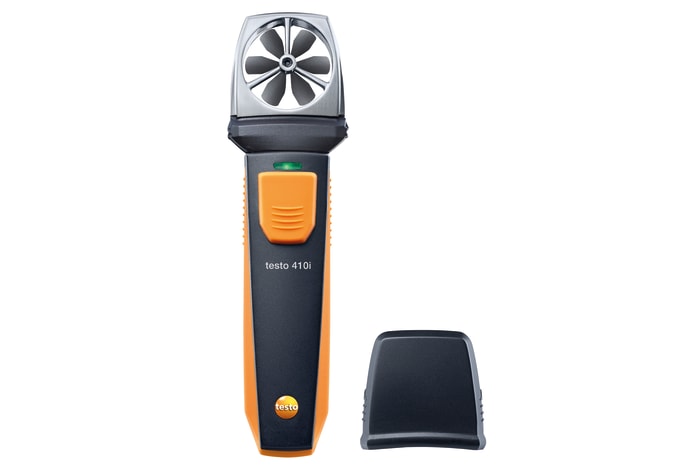All You Required to Know Regarding Anemometers: How They Function, Why They Matter, and Where to Use Them
Anemometers, however frequently overlooked in the world of clinical instruments, play a vital duty in various areas, supplying valuable insights into wind rate and airflow patterns. As we delve into the intricacies of anemometer modern technology, we will certainly reveal the internal workings of these gadgets, their relevance, and the crucial factors to consider when choosing the best anemometer for details applications.

Anemometer Basics
A necessary instrument used to measure wind speed and direction, the anemometer plays a crucial duty in weather forecasting and numerous industries. An anemometer generally contains 3 or 4 mugs that rotate in the wind, a vane that directs into the wind, and sensing units to track the turnings or activities. By determining the rotations or activities over a particular time period, the anemometer can identify wind speed. The vane aids identify wind instructions by directing right into the wind, supplying important data for weather projecting, aeronautics, maritime operations, environmental monitoring, and wind energy applications.
There are various kinds of anemometers offered, consisting of cup anemometers, vane anemometers, hot-wire anemometers, and sonic anemometers, each with its special attributes and applications. Cup anemometers are frequently made use of for basic wind speed measurements, while vane anemometers are favored for directional measurements.
Concepts of Anemometer Operation
Structure on the fundamental understanding of anemometer basics, the concepts of anemometer procedure illuminate the technicians behind wind rate and instructions dimensions. Cup anemometers, for circumstances, have three or more cups that catch the wind, creating them to spin faster as the wind rate boosts. Hot-wire anemometers depend on a heated cord that cools down as wind passes over it, with the rate of cooling down identifying the wind speed.
Value of Anemometers
Anemometers play a vital duty in determining wind speed and direction, providing vital information for climate forecasting, climate research studies, environmental monitoring, and aviation operations. Meteorologists depend on anemometers to gather exact wind information, aiding pop over to this site them understand weather condition patterns, predict tornados, and concern prompt warnings to the public. Wind ranch operators use anemometers to evaluate wind conditions and maximize electrical energy production from wind generators.
Applications Throughout Numerous Industries
Applications of anemometers extend throughout diverse sectors, showcasing their adaptability and utility beyond meteorology. In the renewable resource sector, anemometers play an essential duty in examining wind conditions for wind farm positionings, making sure ideal energy manufacturing. Industries like building and construction and mining use anemometers to check wind speeds, critical for safety and security protocols, specifically when operating at elevations or in open-pit mines where solid winds can present risks. Anemometers are additionally essential in the aeronautics market, assisting pilots in understanding airspeed and wind instructions for safe liftoffs and landings. The maritime field take advantage of anemometers for ship navigation, aiding sailors prepare for climate changes and change courses as necessary. In agriculture, anemometers help farmers in taking care of crop spraying by offering real-time data on wind speed to stay clear of drift. Anemometers discover applications in Cooling and heating systems to optimize air flow and enhance power efficiency in structures. The varied use situations of anemometers highlight their significance throughout numerous sectors, highlighting their important duty in enhancing functional safety and this page security and performance (anemometer).

Selecting the Right Anemometer for Your Demands
For basic objectives, a mug anemometer is suitable for measuring wind speed, while a vane anemometer gives wind instructions information. Hot-wire anemometers are excellent for low airspeed dimensions, and ultrasonic anemometers use high precision and toughness.

Final Thought
In verdict, anemometers play a crucial role in determining wind speed and instructions across get more numerous sectors. It is crucial to take into consideration the relevance of anemometers in order to make enlightened decisions when selecting the most appropriate device for determining wind problems.
There are numerous types of anemometers offered, including cup anemometers, vane anemometers, hot-wire anemometers, and sonic anemometers, each with its unique features and applications. Cup anemometers are typically utilized for standard wind speed dimensions, while vane anemometers are favored for directional measurements. Hot-wire anemometers are ideal for low airspeeds, and sonic anemometers are optimal for high-precision dimensions in research study and industrial setups.Structure on the fundamental understanding of anemometer fundamentals, the principles of anemometer procedure illuminate the technicians behind wind rate and instructions dimensions. For general functions, a mug anemometer is appropriate for measuring wind rate, while a vane anemometer gives wind instructions information.